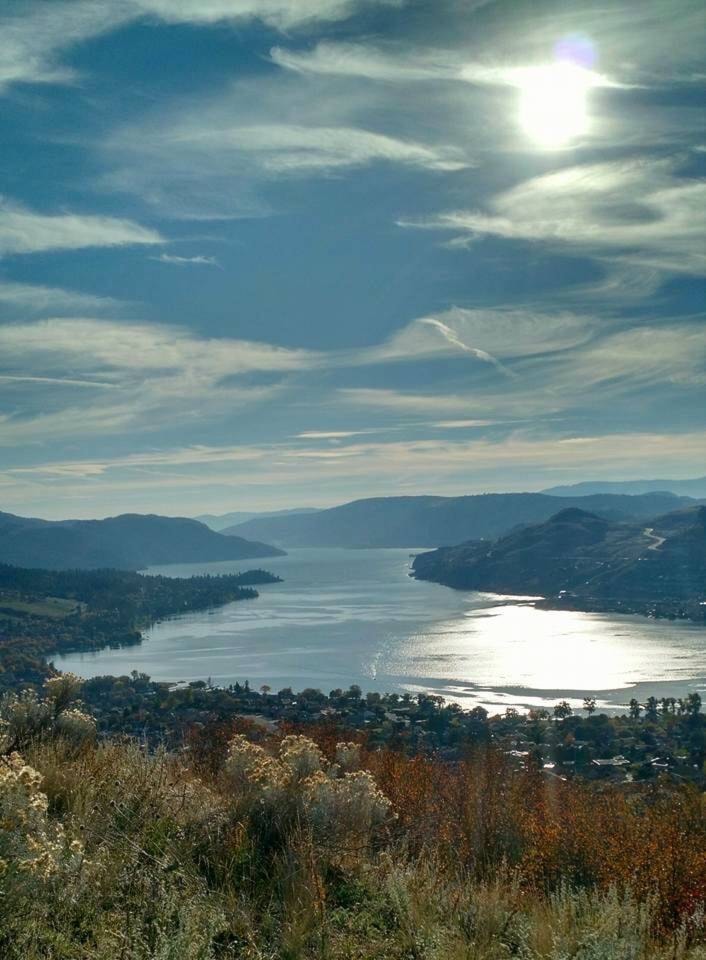Clouds are massive condensations of minuscule water vapour (gas) droplets seen at a distance. They reflect sunlight appearing white in the blue sky or as an inversion in a distant valley. If you see one up close — it’s fog. Blow out warm breath on a cold day to create your own fog cloud.
Clouds give us comfort. On hot summer days, clouds block the sun creating cooling shade. On cold winter nights, cloud cover keeps the daytime warmth in like a blanket.
Clouds can determine the weather. An Inuit man on CBC recounted how as a youngster it was his job to go outside in the morning to see what the clouds say.
Generally, our clouds move in from the west. From the southwest, it’s warming; from the northwest, it’s cooling. A spectacular sunset forecasts a sunny morning, as in the rhyme, “red sky at night, shepherd’s delight.” Once set, sunbeams stream through the clear skies in the west. They light up the clouds which will pass by. The reverse holds with, “red sky in the morning, shepherd’s warning,” when the sun rises in a clear eastern sky and reflects onto the clouds gathering in the west coming our way. In winter, this might make skiers happy.
The amount of water vapour, temperatures at various heights, the wind, and air pressure create different types of clouds. Luke Howard, an English pharmacist/naturalist, developed a system to classify clouds in 1803. He noticed that clouds belong to three basic groups. You’ve probably heard their names: cumulus means “heap” or “pile” in Latin — flat on the bottom with big billowy tops, stratus means “stretched out” or “layer”— short and spread across great distances, and cirrus means “curl” — wispy and thin.
These three categories only describe the primary clouds, so he combined the names with others relating them to their levels in the atmosphere to create ten cloud classifications with names such as cirrostratus, cumulonimbus, altocumulus and more. Nimbus means “rain” or “rainy cloud.”
The bottoms of low-level clouds are typically below altitudes of two kilometres (6,500 feet). Fair-weather cumulus clouds are the large fluffy clouds often seen on bright blue days that resemble different shapes. Stratus clouds give the sky an overcast appearance resembling fog. Stratocumulus clouds are low and lumpy, usually with gaps where sunlight or moonlight shines through. These clouds can be spread over wide distances.
The bottoms of mid-level clouds usually begin around two to six km (6,500-20,000 feet). They are usually prefixed by “alto.” Altocumulus clouds either appear as sheets of little round clouds or as parallel stripes of clouds. Altostratus clouds usually consist of a solid, thick layer that doesn’t let shadows form on the ground.
The bottoms of high-level clouds generally begin between six to 12 km (20,000 to 40,000 feet). High-level clouds are typically prefixed by “cirro.” Cirrostratus clouds may cover the sky with a thin milky blanket allowing some light through or they may create a halo around the sun or moon. Cirrocumulus clouds usually create patterns of patchy cotton balls high in the sky or they may form in bands, creating a wavy appearance. Cirrus clouds appear as white, delicate, wispy stripes or fans that often curve with the wind.
Clouds move with the wind. When clouds are part of a thunderstorm they usually travel more than 50 km/hr.
High cirrus clouds are pushed along by the jet stream, sometimes travelling at more than 160 km/hr.
Download a cloud chart to study the sky. Exploring the Sky By Day, by Terence Dickinson is great, too.
— Roseanne Van Ee shares her vast knowledge of the outdoors to help readers experience and enjoy nature. Follow her on Facebook for more.
READ MORE: Get Outdoors!: Snow sculptures and strange encounters
READMORE: Get Outdoors!: Clouds are worth watching in the North Okanagan
@VernonNews
newsroom@vernonmorningstar.com
Like us on Facebook and follow us on Twitter.
